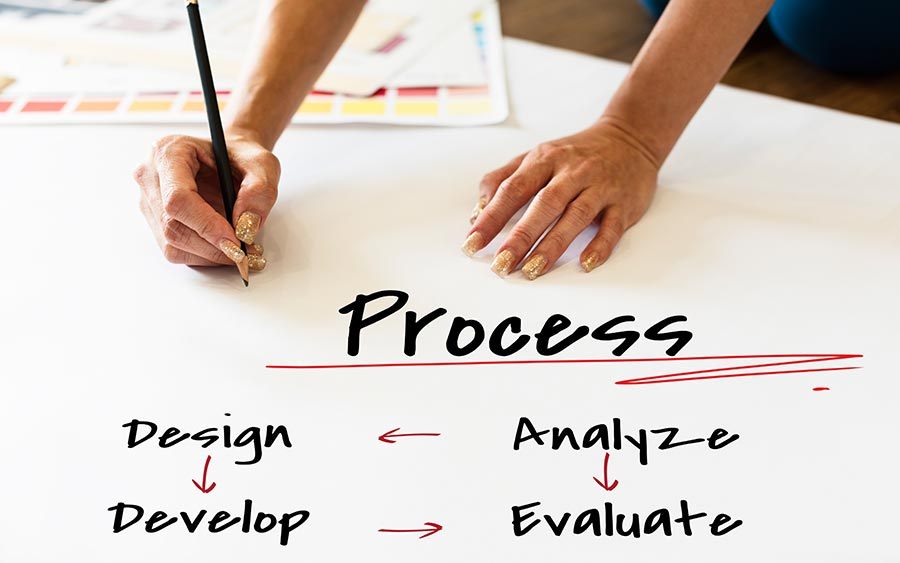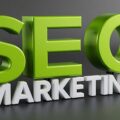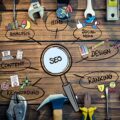Welcome to the world of conversion optimization! If you’re looking to boost your business’s online success, one of the key areas you need to focus on is your landing page. A well-optimized landing page can make all the difference between visitors bouncing away and converting into valuable customers. In this blog post, we will explore what a landing page is, its anatomy, and most importantly, how you can optimize it for maximum conversions. So get ready to transform your plain old landing page into a powerful tool that drives business growth! Let’s dive in and unlock the secrets of creating a high-converting landing page for business.

What is a Landing Page?
A landing page is a crucial element in any digital marketing campaign. It is a standalone web page that serves as the entry point for visitors to your website. Unlike other pages on your site, such as the homepage or product pages, a landing page is specifically designed to convert visitors into leads or customers.
The purpose of a landing page can vary depending on your business goals. It could be to capture email addresses through a sign-up form, promote and sell a specific product, or encourage users to download an ebook or whitepaper. Whatever the objective may be, the key is to drive conversions.
To create an effective landing page for your business, you need to consider its anatomy. A high-converting landing page typically consists of several elements:
Optimizing your landing page involves implementing best practices aimed at increasing conversions:
Remember, every business is unique; therefore testing different strategies through A/B testing will help you understand what works best for your audience. By continuously optimizing and refining your
When it comes to creating a high-converting landing page for your business, understanding the anatomy of an effective design is crucial. Each element on your landing page plays a specific role in capturing the attention of visitors and guiding them toward taking action.
By incorporating these essential elements into your landing page design, you can create a highly effective tool for driving conversions in your business!
When it comes to boosting your conversion rates, optimizing your landing page is absolutely crucial. After all, a high-converting landing page can make or break the success of your business. So how can you ensure that your landing page is optimized for maximum conversions? Here are some tips to get you started.
First and foremost, make sure that your headline grabs attention and clearly communicates the value proposition of your offer. Use compelling language that resonates with your target audience and entices them to take action.
Next, focus on creating a visually appealing layout that is easy on the eyes and guides visitors toward the desired call-to-action. Keep it simple, clean, and uncluttered, avoiding any distractions that might divert attention away from the main goal.
Another important element is persuasive copywriting. Craft engaging content that speaks directly to your audience’s pain points and offers a solution they simply cannot resist. Clearly communicate the benefits they will receive by taking action on your landing page.
In addition to compelling copywriting, use eye-catching visuals such as images or videos that support your message and enhance the overall user experience.
Furthermore, optimize load times by minimizing unnecessary elements like large images or complex scripts that could slow down the loading speed. A fast-loading landing page ensures visitors don’t lose interest or patience before even seeing what you have to offer.
Last but importantly, include social proof in the form of testimonials or reviews from satisfied customers who have already benefited from what you’re offering. This helps build trust in potential customers’ minds and increases their confidence in making a purchase or taking another desired action on your landing page.
By following these optimization techniques for conversions on your landing page, you’ll be well on your way to increasing conversion rates and achieving better results for your business.
One of the most effective ways to optimize your landing page for conversions is by conducting A/B testing. This process involves creating two versions of your landing page and then comparing their performance to determine which one generates more conversions.
Start by identifying the elements you want to test, such as headlines, images, call-to-action buttons, or even the color scheme. Make sure to change only one element at a time so that you can accurately measure its impact on conversion rates.
Once you have created your variations, direct an equal amount of traffic to each version using tools like Google Analytics or specialized A/B testing software. Monitor how visitors interact with each version and track key metrics such as click-through rates, bounce rates, and conversion rates.
Based on the results of your tests, make data-driven decisions about which elements are working well and should be implemented in future iterations of your landing page. Remember that optimization is an ongoing process – what works now may not work in the future due to changing user preferences or market trends.
By consistently conducting A/B testing on your landing page, you can continuously improve its performance and boost conversion rates over time. So don’t be afraid to experiment and iterate until you find the winning combination that drives maximum results for your business!
Optimizing your landing page for conversions is a crucial step in driving success for your business. By following the strategies and tips outlined in this article, you can create a high-converting landing page that captures the attention of visitors and motivates them to take action.
Remember, a well-designed landing page should have a clear value proposition, compelling headlines, persuasive copywriting, visually appealing elements, and strong call-to-action buttons. It should also be mobile-friendly and load quickly to provide an optimal user experience.
Additionally, A/B testing allows you to continuously improve your landing page by experimenting with different elements and analyzing the results. This iterative process will help you identify what works best for your target audience and increase conversion rates over time.
So go ahead and apply these optimization techniques to your landing pages. Monitor their performance closely using analytics tools and make data-driven decisions based on visitor behavior. With dedication and perseverance, you’ll be able to boost conversion rates on your landing pages significantly.
Remember: Your landing page is often the first impression potential customers have of your business. So make it count! Invest time in refining its design, messaging, and functionality until it becomes an effective tool for converting visitors into leads or customers.
Now it’s time to put theory into practice! Start optimizing those landing pages today!
Happy Converting!

A practical roadmap to integrating ADA standards with Web Development in Roseville for law firms

How Google decides top Rocklin legal websites and what attorneys should know about SEO Marketing Services in Rocklin

How Roofing SEO Services in Houston Boost Visibility With a Mobile-Friendly Website for Local Contractors

Get Website Development Services in Rocklin to boost leads for your Rocklin business today

How responsive web design Rocklin helps local businesses attract more nearby customers

7 Page-Speed Fixes a Website Designer in Roseville Uses to Lift Conversion Rates

D. Banerjee’s Guide to Website Design in Rocklin: What Your Site Needs to Rank